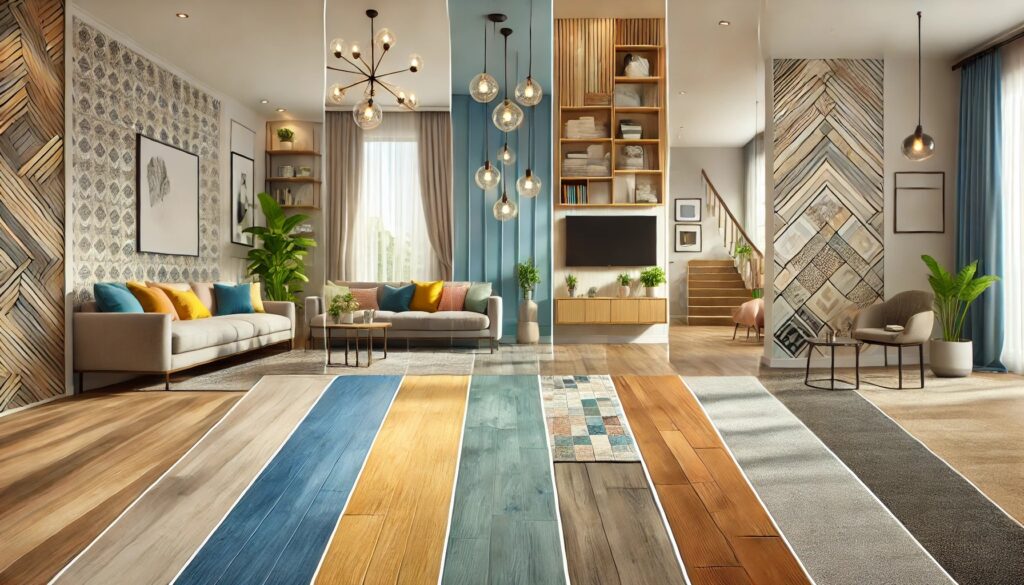Looking to refresh your floors without breaking the bank? You’re not alone! As someone who’s helped countless homeowners navigate the maze of flooring options and DIY floor installation, I’ve learned that beautiful floors don’t always need a beautiful budget. Let’s explore some wallet-friendly budget flooring options that’ll make your space shine without emptying your savings account. Whether planning a full home renovation or just updating a single room, these cost-effective flooring solutions will help you achieve professional results on a budget.
Why Budget-Friendly Doesn’t Mean Low-Quality
Before we dive into specific options, let me share a quick story. Last summer, I helped my sister renovate her first home on a shoestring budget. She was convinced that affordable flooring meant settling for ugly, cheap-looking results. Boy, was she wrong! The compliments she gets on her new floors now? Priceless. And the best part? We spent less than half of what she initially budgeted. Modern manufacturing techniques and materials have revolutionized budget flooring options. Today’s affordable flooring solutions often incorporate advanced technologies and durable materials that can stand up to daily wear and tear while maintaining their aesthetic appeal. The key is knowing what to look for and understanding how different options can work in your space.
The Top 5 Budget-Friendly Flooring Options
1. Luxury Vinyl Plank (LVP) Flooring
Price range: $2-$7 per square foot
Remember when vinyl flooring meant those tacky, plastic-looking sheets from the 70s? Those days are long gone! Today’s luxury vinyl planks are basically the superhero of budget flooring. They’re waterproof, scratch-resistant, and can perfectly mimic the look of hardwood or stone.
Pro tip: Look for LVP with a wear layer of at least 12 mil for high-traffic areas. I’ve seen 8 mil options scratch within months in busy households.
The innovation in LVP technology means you can now find options with dimensional stability, realistic wood grains, and even textured surfaces that feel like real wood underfoot. Many brands also offer enhanced UV protection to prevent fading and discoloration over time.
2. Sheet Vinyl
Price range: $0.50-$4 per square foot
Don’t roll your eyes just yet! Modern sheet vinyl is like the cool, sophisticated cousin of its outdated predecessors. It’s perfect for bathrooms and kitchens where water resistance is crucial. Plus, some of the new patterns and textures are absolutely stunning.
Installation hack: While professional installation is recommended, determined DIYers can tackle this with proper preparation and patience. Just remember – the key is in the subfloor preparation!
Today’s sheet vinyl comes with advanced wear layers that protect against scuffs and stains, and many options feature microbial protection – perfect for damp areas like bathrooms and laundry rooms.
3. Laminate Flooring
Price range: $1-$5 per square foot
Laminate has come a long way, baby! Today’s options include water-resistant cores and remarkably realistic wood grain patterns. It’s like the chameleon of flooring – versatile, durable, and surprisingly sophisticated.
Modern laminate flooring often includes innovative features like embossed-in-register texturing, which aligns the surface texture perfectly with the printed pattern beneath. This creates an incredibly realistic wood or stone look that’s hard to distinguish from the real thing.
4. Peel-and-Stick Vinyl Tiles
Price range: $1-$3 per square foot
I know what you’re thinking – “Aren’t those cheap-looking?” Not anymore! These little squares of genius have evolved into a legitimate flooring option. They’re perfect for rental properties or quick updates, and some designs are absolutely Instagram-worthy.
Designer tip: Create custom patterns by mixing and matching different tiles. I’ve seen stunning checkerboard and herringbone patterns that look way more expensive than they actually are.
Designer tip: Create custom patterns by mixing and matching different tiles. I’ve seen stunning checkerboard and herringbone patterns that look way more expensive than they actually are.
5. Cork Flooring
Price range: $3-$8 per square foot
Here’s my dark horse candidate for budget flooring MVP. Cork is sustainable, comfortable underfoot, and naturally insulating. It’s like walking on a cloud that happens to be environmentally friendly! I call it the dark horse because many homeowners overlook this option, not realizing it’s actually harvested from tree bark without harming the tree, and it regenerates every 9-10 years. Plus, it’s naturally resistant to mold, mildew, and even termites!
What makes cork truly special is its unique cellular structure – think of millions of tiny air pockets that compress and bounce back. This means it’s not only comfortable to stand on for long periods (perfect for home offices or kitchens), but it also helps reduce noise between floors. For families with young children or upstairs neighbors, this sound-dampening quality is a game-changer.
Pro tip: While cork’s upfront cost might be slightly higher than some other budget options, its durability and longevity often make it more cost-effective in the long run. Just make sure to properly seal it in moisture-prone areas, and it’ll serve you well for decades.
Understanding Subfloor Requirements
One often overlooked aspect of budget flooring is your subfloor condition. Even the most affordable flooring can become expensive if your subfloor needs major repairs. Here’s what you need to know:
- Concrete Subfloors: Check for moisture levels and cracks before installation. Small cracks can be filled with patch compound, but larger issues need professional attention.
- Wood Subfloors: Look for loose boards, squeaks, and signs of rot. Sometimes, a layer of plywood can solve minor issues.
- Existing Flooring: In some cases, you can install new flooring over existing materials, saving significant removal costs.
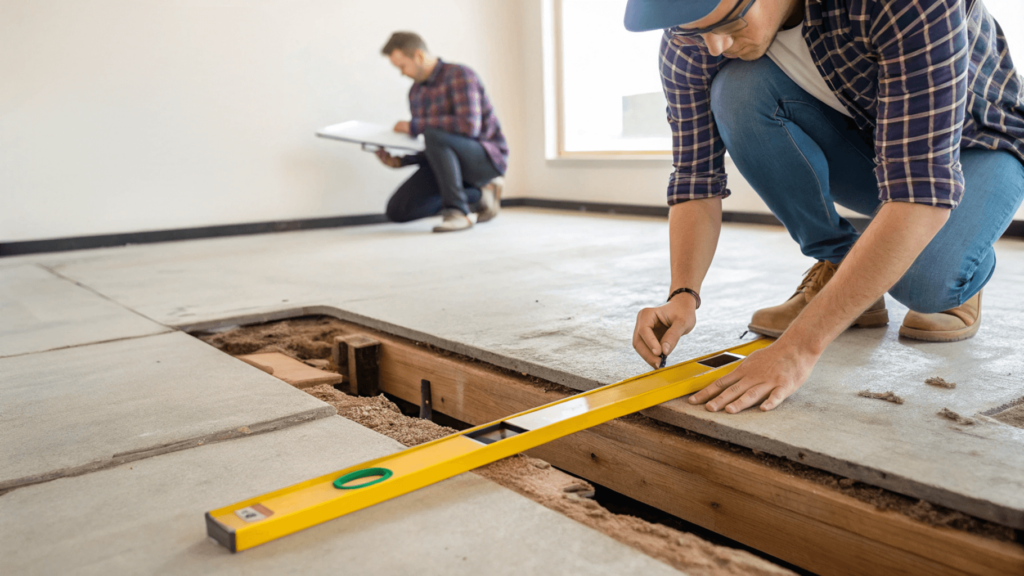
Hidden Costs to Consider
When budgeting for your flooring project, don’t forget these often-overlooked expenses:
- Underlayment: Some flooring types require special underlayment for moisture protection or sound dampening
- Transition Strips: Necessary where your new flooring meets different floor types
- Tools and Supplies: Factor in costs for basic installation tools
- Furniture Moving: Consider whether you’ll need help relocating heavy items
- Disposal Fees: Old flooring removal and disposal can add unexpected costs

Maintenance Tips for Long-Lasting Results
To get the most value from your budget-friendly flooring:
Daily Care
- Sweep or vacuum regularly to prevent dirt from scratching surfaces
- Clean spills immediately to prevent staining
- Use appropriate cleaning products for your specific flooring type
Seasonal Maintenance
- Deep clean every 3-6 months
- Check for signs of wear or damage
- Reapply protective coatings if recommended by manufacturer
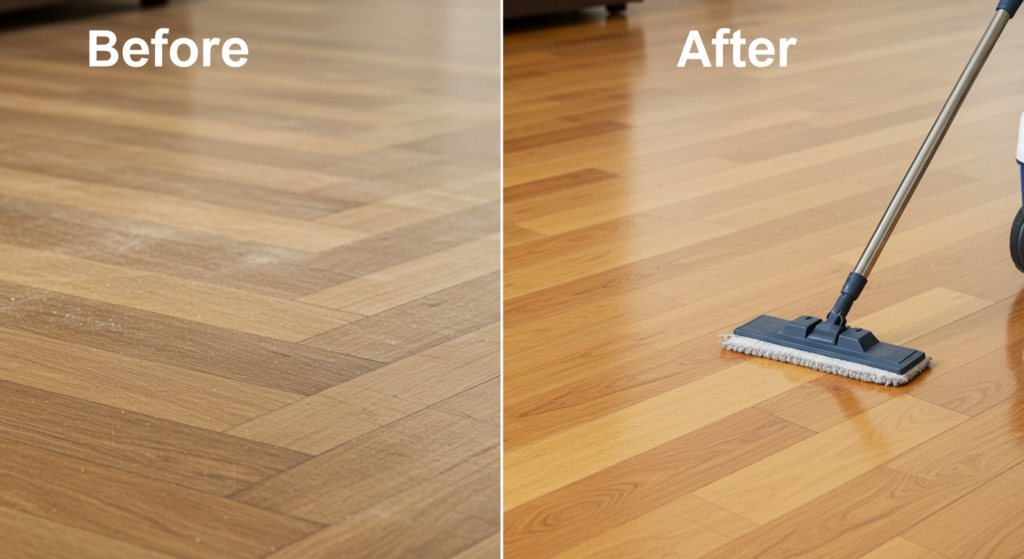
Room-Specific Recommendations
Kitchen Flooring
- Prioritize water resistance and easy cleaning
- Consider anti-fatigue properties if you cook frequently
- Look for stain-resistant options
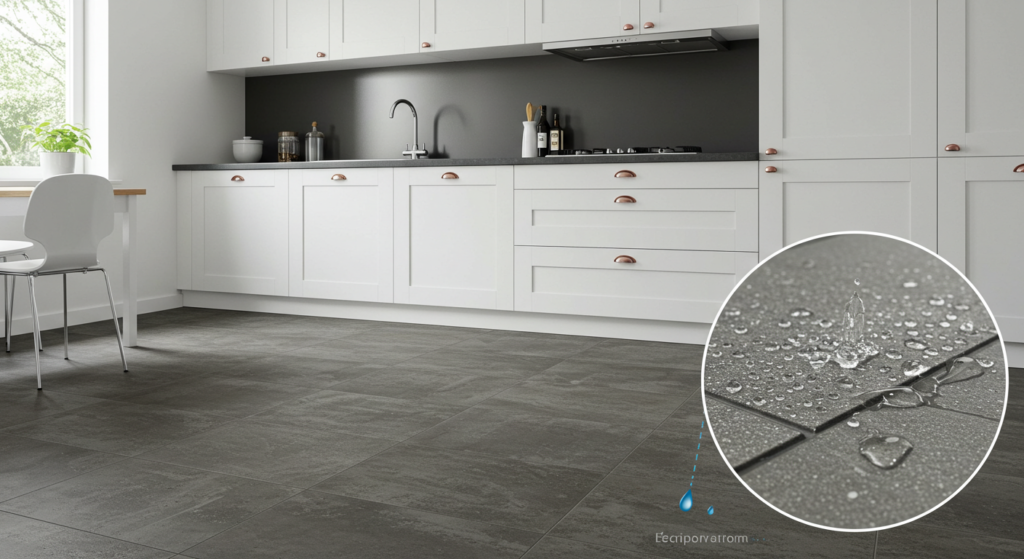
Bathroom Solutions
- Waterproof options are essential
- Focus on slip resistance
- Consider installation complexity around toilets and vanities
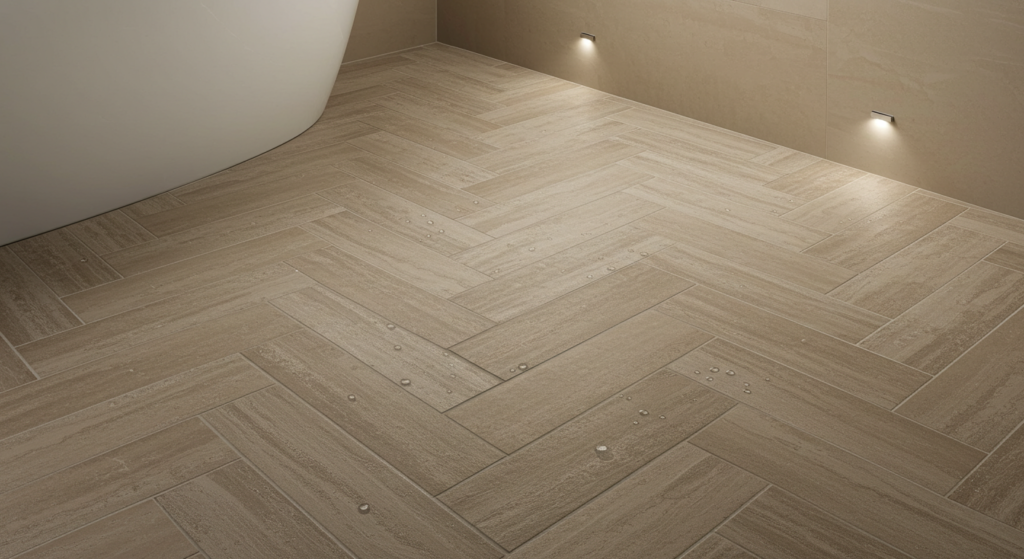
Living Areas
- Balance comfort with durability
- Consider sound dampening properties
- Choose styles that complement multiple decor changes

Tips for a Successful DIY Installation
If you’re planning to install yourself:

Preparation
- Acclimate your flooring materials for at least 48 hours
- Gather all necessary tools before starting
- Clear the room completely
- Plan your layout carefully
Common Mistakes to Avoid
- Skipping the underlayment
- Rushing the preparation phase
- Not planning for waste
- Ignoring manufacturer guidelines
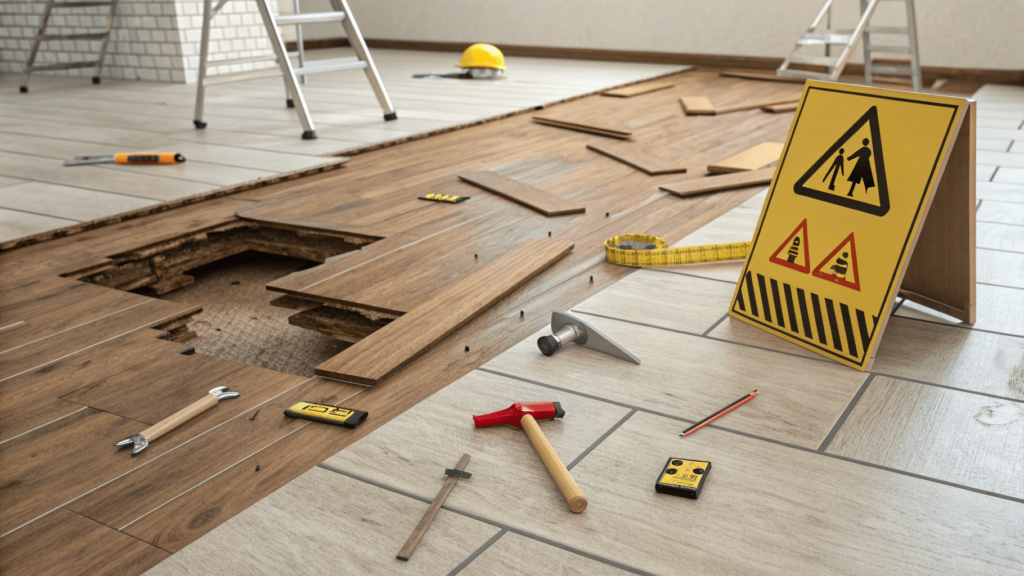
Eco-Friendly Budget Options
For environmentally conscious homeowners:
- Look for recycled content in vinyl products
- Consider sustainable bamboo alternatives
- Check for low-VOC certifications
- Investigate reclaimed materials

Dealing with Special Situations
High-Moisture Areas
- Best waterproof options under $5/sq ft
- Proper sealing techniques
- Moisture barrier requirements
Rental Properties
- Removable options that won’t void deposits
- Quick installation solutions
- Best value for temporary situations
Future Trends in Budget Flooring
Stay ahead with these emerging options:
- Hybrid flooring materials
- Advanced digital printing techniques
- New sustainable materials
- Innovative installation systems
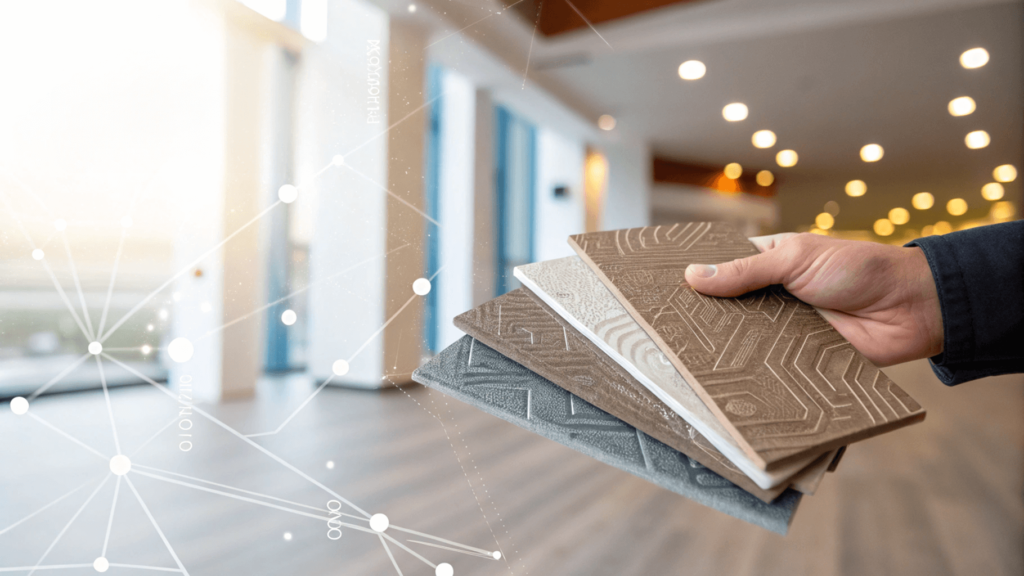
Comparison Table: Features at a Glance
| Flooring Type | Price Range (sq ft) | Durability | Water Resistance | DIY-Friendly | Maintenance |
|---|---|---|---|---|---|
| LVP | $2-$7 | High | Excellent | Medium | Easy |
| Sheet Vinyl | $0.50-$4 | Medium | Excellent | Low | Easy |
| Laminate | $1-$5 | High | Good | Medium | Easy |
| Peel-and-Stick | $1-$3 | Medium | Good | High | Easy |
| Cork | $3-$8 | Medium | Fair | Medium | Moderate |
How to Choose the Right Budget Flooring
Let’s get real – choosing flooring isn’t just about price. Consider these factors:
- Traffic Patterns: High-traffic areas need more durable options
- Moisture Exposure: Bathrooms and basements require water-resistant materials
- Installation Costs: Some cheaper materials might require professional installation
- Maintenance Requirements: Factor in long-term care costs
- Lifestyle Needs: Kids? Pets? Choose accordingly!
Money-Saving Installation Tips
Want to maximize your savings? Here are some insider tips:
- Compare prices across multiple retailers (including online options)
- Buy during seasonal sales (typically winter and late summer)
- Consider installing in phases to spread out costs
- Look for discontinued styles (they’re often heavily discounted)
- Calculate waste factor accurately to avoid overbuying
Common FAQs About Budget Flooring
Q: What’s the cheapest DIY flooring option? A: Peel-and-stick vinyl tiles take the crown here. They’re affordable, user-friendly, and require minimal tools.
Q: How do I choose flooring for high-traffic areas on a budget? A: Look for LVP with a thick wear layer or durable laminate with an AC rating of 4 or higher.
Q: What are some creative budget flooring ideas? A: Try mixing different vinyl tile patterns, using laminate planks in a herringbone pattern, or creating borders with contrasting materials.
The Bottom Line
Renovating on a budget doesn’t mean compromising on style or quality. Each of these options offers unique benefits, and the right choice depends on your specific needs and circumstances. Remember, the key is balancing initial costs with long-term value.
Ready to start your flooring project? Keep this guide handy, and don’t forget to thoroughly research your chosen material before making the final decision. Your perfect floor is out there – and it doesn’t have to cost a fortune!
[Call to Action] Share your budget flooring success stories in the comments below! Have questions about specific flooring options? Drop them in the comments, and I’ll help you navigate your choices.

